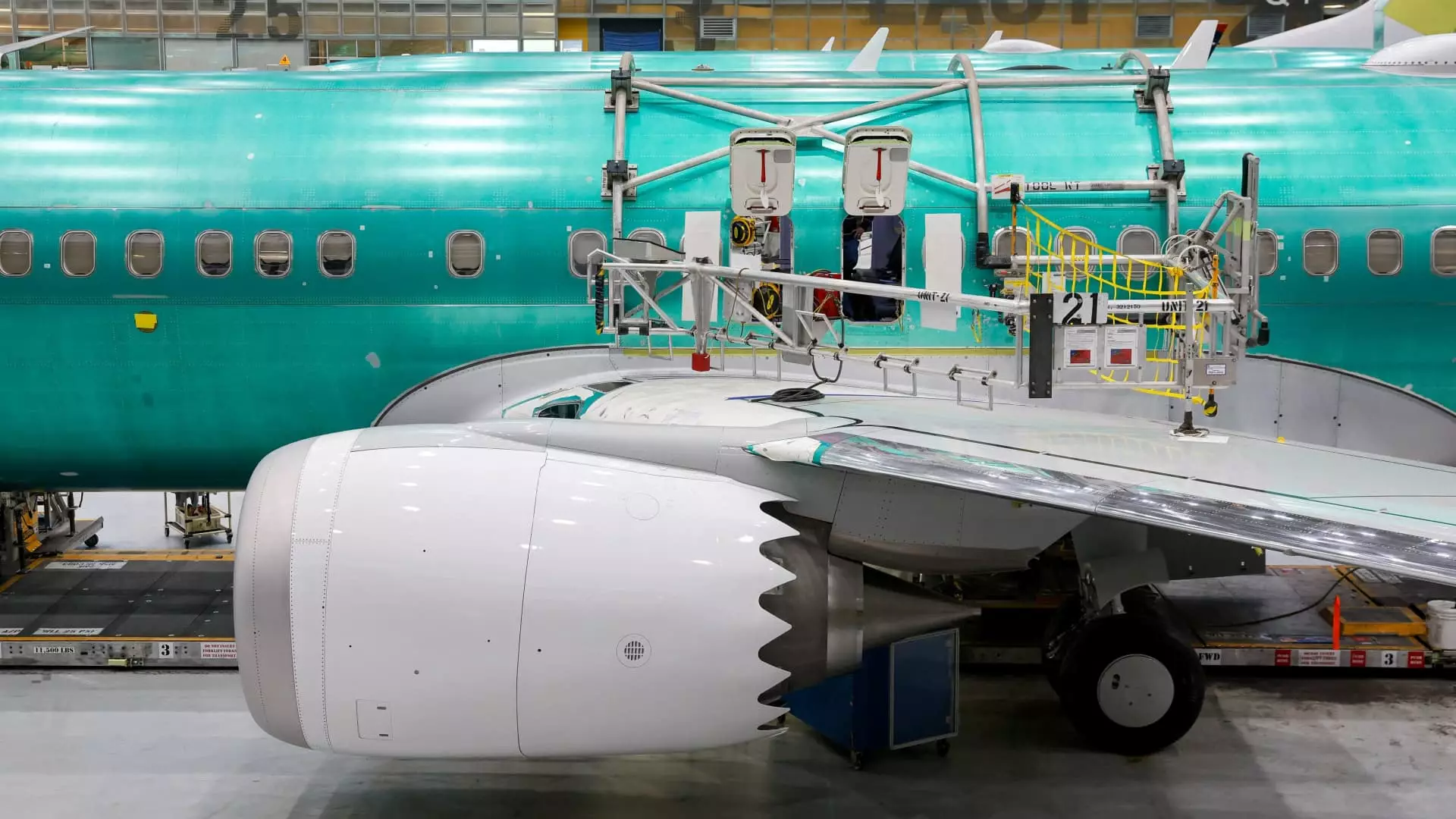Boeing, a titan in the aerospace industry, is attempting to navigate a difficult landscape characterized by substantial setbacks and scrutiny. Just a year prior, a significant incident involving an Alaska Airlines Boeing 737 Max 9 thrust the company back into the public eye, highlighting severe lapses in safety procedures. A fuselage panel covering an unused emergency exit door blew out during flight, spooking passengers but fortunately resulting in no serious injuries during the subsequent emergency landing in Portland, Oregon. Investigations revealed that key bolts were missing from the aircraft, an alarming oversight at Boeing’s Renton facility, that raised questions about the company’s commitment to safety and quality assurance. This incident stands as a stark reminder of Boeing’s turbulent past, particularly after the two catastrophic 737 Max crashes that claimed 346 lives. A year into recovery, the manufacturer’s stock has plummeted over 30%, contrasting sharply with the positive trajectory of the S&P 500.
In response to ongoing crises, Boeing has initiated profound changes within its leadership ranks, including the appointment of a new CEO, Kelly Ortberg, who brings extensive experience from his prior role at Rockwell Collins. Ortberg’s entry coincided with labor unrest, as Boeing machinists went on strike, culminating in a new labor agreement that promised significant wage increases. However, demands to reinstate long-standing pension plans were not met, indicating ongoing tensions between management and employees. As Boeing seeks to stabilize operations, it is clear that the recent labor dispute has disrupted production capabilities, further complicating their recovery strategy.
Boeing’s management team has also committed to enhancing training and quality assurance practices within its factories. This includes the implementation of random quality audits and improving processes to avoid “traveled work,” where tasks are conducted out of their intended sequence. These initiatives aim to elevate the overall manufacturing process, ultimately reducing the likelihood of defects and ensuring timely deliveries to airlines that have faced frustrations due to Boeing’s production inconsistencies.
A critical player in Boeing’s recovery is the Federal Aviation Administration (FAA), which has ramped up oversight of the company, capping production rates of the 737 Max jets amid ongoing quality concerns. FAA chief Mike Whitaker emphasized the need for a “fundamental cultural shift” at Boeing, prioritizing safety and quality over profits. His stern message reflects the level of scrutiny Boeing is under and the expectations from regulatory bodies, indicating that oversight will remain stringent until the company demonstrates a consistently reliable and safe operational model.
Boeing has not recorded a profit since 2018, and the financial pressure is mounting as the company seeks to recover from massive losses exceeding $30 billion since 2019. The lack of profitability is a significant cause for concern, particularly for shareholders who have watched their investments diminish alongside the notable decline in production and reputation.
As Boeing looks to the future, it faces persistent challenges related to ramping up production while maintaining quality assurance. With a new focus on core competencies, Ortberg has indicated that the company will streamline operations, potentially reducing its workforce by 10%. The decision to downsize is not merely a reaction to market pressures, but a strategic redirection aimed at enhancing focus and execution. The philosophy of “doing less but doing it better” encapsulates Ortberg’s vision, contrasting sharply with previous strategies that may have prioritized volume over quality.
Additionally, with Airbus gaining ground on delivery volumes, Boeing must find a way to not only catch up but also reinvent itself in a competitive landscape. Executives from major airlines, including Southwest, have expressed cautious optimism regarding the new leadership, believing that Ortberg’s insights and actions signify a profound commitment to long-term improvements.
Ultimately, Boeing’s road to recovery is fraught with challenges, creative destruction, and the need for comprehensive cultural reform. The commitment to addressing safety and quality at every level of operation is paramount as the company attempts to regain the trust of regulators, customers, and the public. While the journey toward stability is just beginning, Boeing’s recent initiatives mark essential steps in its endeavor to revitalize its operations. The aviation giant must persist in overcoming both internal lapses and external pressures to secure a safer, more prosperous future in the skies.

